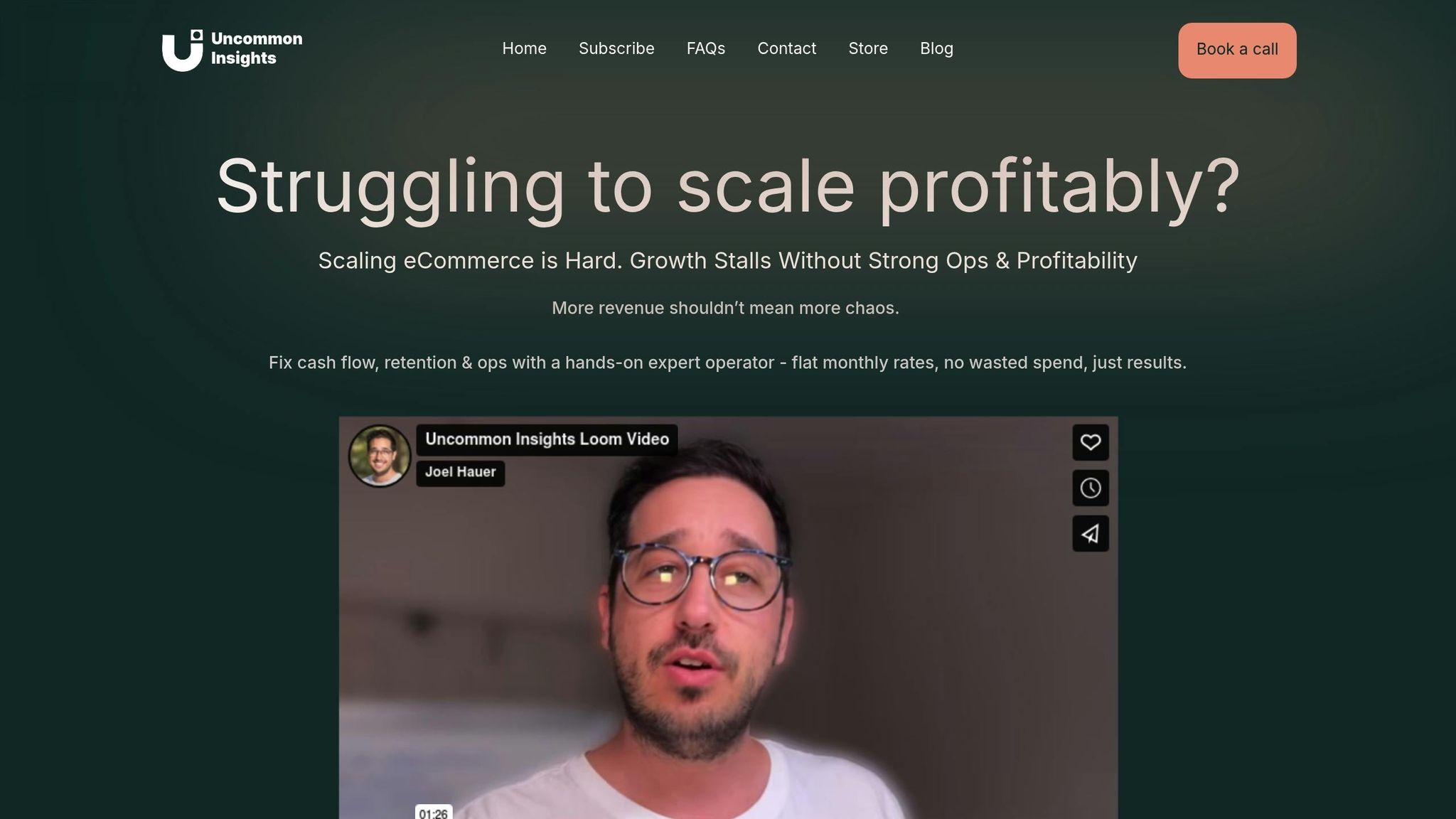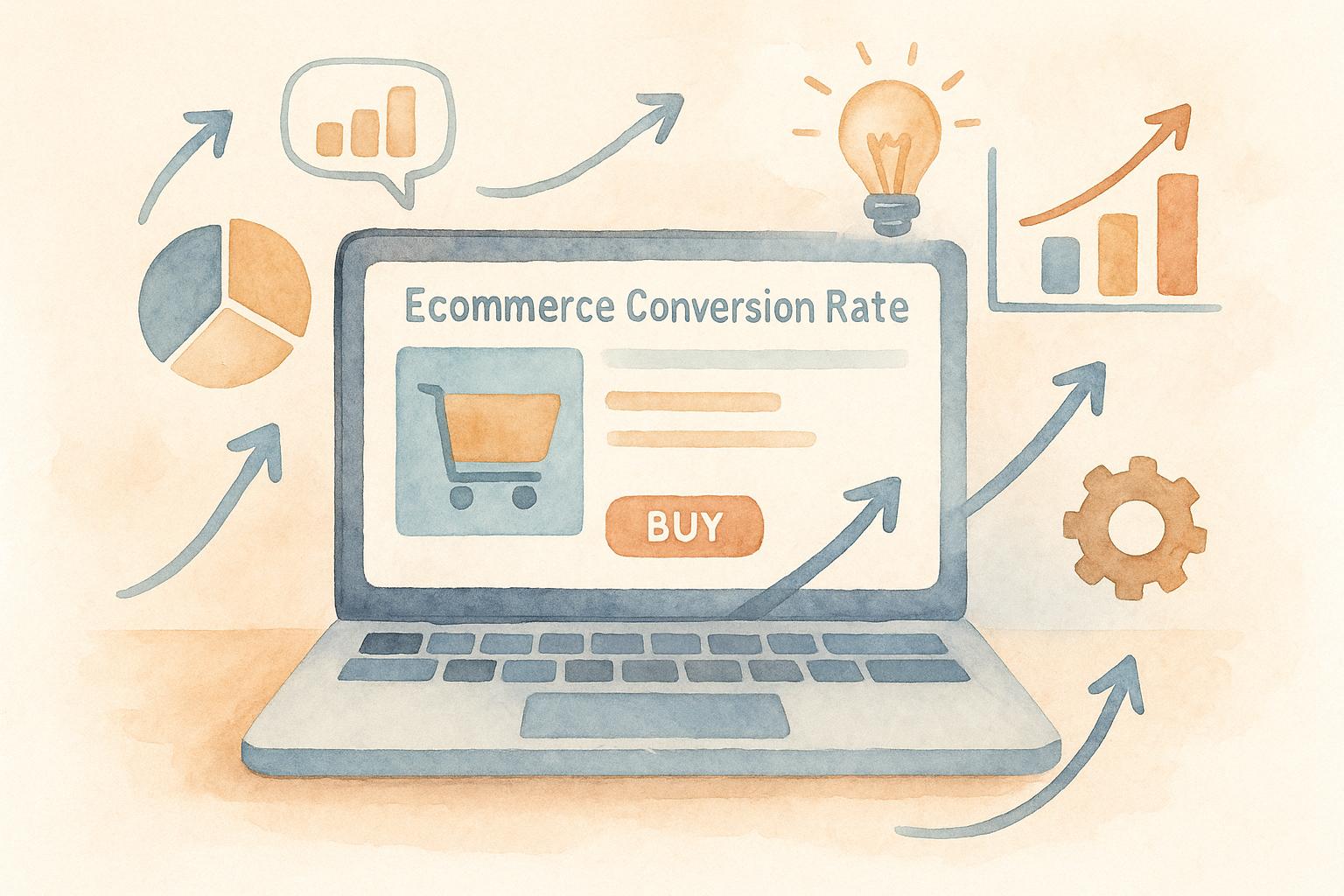VC funding might seem like a fast track to growth, but for many Australian FMCG and eCommerce businesses, it can create more problems than it solves. Here's why:
The Appeal: Quick access to large capital for marketing, product innovation, and market entry. Plus, backing from big-name investors can boost credibility.
The Reality: VC funding often comes with unrealistic growth targets, loss of control, and pressure to prioritise short-term gains over long-term stability.
The Risks: Rapid scaling can lead to quality issues, operational inefficiencies, and financial strain - especially in Australia's small, volatile market.
Instead of relying on VC funding, businesses can focus on alternatives like improving cash flow, creating subscription models, and retaining customers. These strategies align growth with actual performance, avoiding the pitfalls of external funding pressures.
The Dark Side of Venture Capital (Too Much Money = 💀???)
How VC Funding Can Damage FMCG and eCommerce Businesses
Expanding on the risks already discussed, the challenges tied to VC funding can severely impact how businesses operate and perform in Australia’s FMCG and eCommerce sectors. While the allure of venture capital is undeniable, it often comes with strings attached - strings that can compromise a company’s core values. Key concerns include losing control, chasing unrealistic growth targets, and navigating the volatility of Australia’s unique market.
Loss of Control and Ownership
One of the biggest trade-offs with VC funding is giving up a chunk of equity, which often means founders lose a significant degree of control over their business. This becomes even more problematic when investor goals clash with the company’s long-term vision. Over time, the board shifts from being founder-driven to one dominated by investor influence, which can slow decision-making and prioritise short-term profits over sustainable growth. As a result, founders may find themselves pulled away from the daily operations that initially made the business thrive.
Unrealistic Growth Expectations
VC-backed businesses are frequently under pressure to deliver rapid growth and high returns within tight timelines. This focus on hitting aggressive growth metrics can come at a cost - undermining customer loyalty, operational efficiency, and even brand reputation. For Australian FMCG brands, this pressure has led to issues like quality control failures, supply chain disruptions, and poor customer service. Scaling too fast without a solid operational foundation is especially risky in Australia, where the market is relatively small, and seasonal consumer behaviour adds another layer of complexity. These challenges often leave businesses financially strained and struggling to maintain stability.
Economic and Market Volatility in Australia
Australia’s economic environment presents unique hurdles for companies backed by venture capital. The domestic market’s size can limit opportunities for the kind of explosive growth VC investors expect. Interest rate changes can add financial strain to cash-burning businesses that rely on continual funding rounds. On top of that, shifts in consumer spending - driven by economic trends and seasonal patterns - make it even harder to achieve consistent growth. For eCommerce businesses, currency fluctuations and Australia’s seasonal spending habits, such as the Christmas boom and quieter winter months, create additional challenges. The competitive job market also pushes companies to adopt aggressive hiring strategies, which can lead to higher turnover and inflated staffing costs. These factors combine to make cash flow management and operational planning even more complex for businesses trying to meet VC demands.
These challenges highlight the importance of exploring alternative growth strategies that focus on long-term sustainability rather than short-term gains driven by external funding pressures.
Practical Alternatives to VC Funding
Instead of chasing venture capital and the high expectations that come with it, Australian FMCG and eCommerce businesses can focus on sustainable growth by leveraging internal strategies. These methods prioritise making the most of existing resources and building steady, reliable revenue streams over time.
Cash Flow Optimisation
Managing cash flow effectively can fuel growth by ensuring money moves in faster than it moves out.
Start by renegotiating payment terms with suppliers to free up working capital for reinvestment. On the other side, encourage quicker payments from customers by offering early payment discounts and streamlining invoicing. Use sales data to improve inventory turnover and adopt a just-in-time ordering system, which reduces the amount of cash tied up in stock.
Reinvesting profits is another powerful way to fund growth. Instead of distributing all profits, retain a portion to invest in areas like product development, marketing, or operational efficiency. This approach aligns growth with your business's actual performance, avoiding the pressures of meeting external investor demands.
Seasonal planning is also a key part of cash flow management. Australian businesses often face fluctuations, such as Christmas shopping booms, slower winter periods, or back-to-school spikes. Anticipating these cycles and adjusting operations accordingly can help maintain steady cash flow throughout the year.
Once you’ve built a solid cash flow foundation, introducing subscription models can further stabilise your revenue.
Subscription Models and Predictable Revenue
Subscription-based revenue streams can provide the financial stability needed to reduce reliance on outside funding. Even traditional FMCG brands can benefit by incorporating recurring revenue elements into their business models.
For example, consumables like coffee, pet food, or household essentials are ideal for product subscriptions, offering customers convenience while delivering predictable income for the business. To succeed, ensure these subscriptions provide genuine value beyond just convenience.
Service-based subscriptions can also work well alongside product sales. Options like maintenance plans, premium customer support, or access to exclusive content and communities can enhance customer loyalty. For eCommerce businesses, paid membership programs with annual fees can generate upfront cash while encouraging repeat purchases.
Subscription models often lead to higher customer lifetime value and lower acquisition costs compared to one-off sales. They also make it easier to track growth metrics and can simplify business valuation if external funding becomes a consideration later on.
From here, retaining existing customers becomes the next priority for sustainable growth.
Customer Retention and Repeat Purchases
Focusing on existing customers is one of the most effective ways to ensure long-term growth. By prioritising customer lifetime value, businesses can shift from short-term sales goals to building meaningful, lasting relationships.
Start by analysing the customer journey to identify and address any barriers to repeat purchases. This could involve improving product quality, simplifying the reordering process, or offering better post-purchase support. Tools like email marketing, loyalty programs, and personalised recommendations can also help boost retention rates.
Upselling and cross-selling to current customers is another high-impact strategy. Existing customers are far more likely to convert than new ones, so use purchase data to suggest complementary or premium products that enhance their experience while increasing average order value.
Creating a sense of community around your brand can also strengthen customer loyalty. Initiatives like user-generated content campaigns, customer success stories, or exclusive events for loyal customers can foster emotional connections that go beyond price. These efforts often lead to organic word-of-mouth referrals, which reduce acquisition costs and further improve retention.
Unit Economics Analysis
Understanding unit economics - the revenue and costs tied to individual transactions - is critical for sustainable growth. This analysis ensures that each sale contributes positively to your business’s bottom line, avoiding the pitfalls of cash-draining expansion.
Start by calculating customer acquisition costs across different channels and comparing them to customer lifetime value. This will reveal whether your growth strategies are financially sustainable. A healthy balance between these metrics means each customer is contributing effectively to profitability.
Dive deeper with contribution margin analysis to identify which products, sales channels, or customer segments are the most profitable. Focus your efforts on these areas while addressing any loss-making activities to ensure growth translates into stronger financial performance.
Regularly reviewing unit economics is essential. Rising fulfilment costs, declining conversion rates, or increasing return rates are all red flags that signal inefficiencies. Monitoring these metrics allows for quick adjustments to keep your unit economics strong as you scale.
This kind of analysis also guides pricing strategies and product development. By understanding the true costs of serving different customer groups, you can create pricing models that maximise profitability while staying competitive in the Australian market.
Measuring Your Business's Financial Health
Keeping a close eye on your business's financial health is essential for steady growth and avoiding financial missteps. Tracking key metrics provides the foundation for deeper analysis, which we'll explore in detail below.
Key Metrics for Financial Health
Understanding customer metrics is a cornerstone of financial health. One critical comparison is Customer Acquisition Cost (CAC) against Customer Lifetime Value (CLV). Ideally, aim for a CLV-to-CAC ratio of around 3:1.
It's also useful to compare your conversion rates against industry averages. For example, the average conversion rate for Australian e-commerce is 1.83%. Specific industries perform even better, such as food and beverage at 6.26%, consumer goods at 4.8%, and beauty and personal care at 4.05%. These benchmarks can highlight areas where your business might be falling short.
Metrics like Customer Retention Rate and Repeat Customer Rate can reveal early warning signs. A drop in these figures might indicate issues with product–market fit or rising competition in your niche.
Operational financial metrics help measure efficiency. Keep an eye on Average Order Value (AOV) trends and Cart Abandonment Rate to identify potential friction in the purchasing process. Additionally, consider how Refund and Return Rates impact your overall profitability.
Cash flow indicators are vital for avoiding financial bottlenecks. Regularly monitor operating cash flow, days' receivables, and your debt-to-net-worth ratio to ensure you have the liquidity needed to support growth without overextending.
Tools for Business Resilience Assessment
Once you've established key metrics, you can use specific tools to evaluate and strengthen your business's resilience.
Develop a financial health scorecard to evaluate factors such as revenue stability, profitability, liquidity, and growth sustainability.
For revenue stability, assess customer concentration risk, seasonal fluctuations, and how predictable your revenue streams are. Businesses with high customer concentration are more vulnerable, whereas steady subscription or repeat revenue provides greater security.
Profitability analysis should dig deeper than just margins. Break down contribution margins by product line, customer segment, or sales channel to pinpoint areas where profitability may be under strain.
Liquidity evaluation is about ensuring you can meet short-term financial obligations. Calculate the current ratio (current assets divided by current liabilities) and quick ratio (liquid assets divided by current liabilities) as indicators of financial strength.
To evaluate growth sustainability, determine if your business can continue expanding without jeopardising its financial health. Companies relying on retained earnings and positive cash flow for growth are generally in a stronger position than those dependent on external funding.
Using Uncommon Insights' Frameworks

Building on earlier strategies, our Financial Framework provides a structured approach to assess and enhance sustainable growth across revenue, profitability, cash flow, and expansion metrics.
The revenue analysis component takes a close look at customer acquisition, retention, and revenue diversification. It identifies whether your growth is driven by gaining new customers or strengthening relationships with existing ones.
Profitability analysis dives into margins by product, channel, or customer segment. This approach helps uncover hidden challenges that may be eroding performance and suggests adjustments to improve balance.
Cash flow forecasting offers a forward-looking view, projecting funding needs over the next 12–24 months based on current trends and seasonal patterns. This proactive approach allows you to plan for any potential shortfalls and determine if internal resources can sustain your growth plans.
The Incrementality Testing Framework adds another layer by separating correlation from causation in your growth metrics. This ensures that marketing and operational investments drive meaningful results rather than just inflating vanity metrics.
Building a Growth Strategy That Lasts
When crafting a growth strategy, it’s essential to anchor it in solid financial principles. By focusing on cash flow optimisation and customer retention, businesses can lay the groundwork for long-term success. A financially sound plan minimises reliance on external funding and ensures stability during growth phases.
Key Points for Founders and Decision-Makers
Cash flow management: Keeping cash flow in check is crucial for maintaining day-to-day flexibility and ensuring operational stability.
Integrated strategies: Combining financial evaluations with existing cash flow and customer retention efforts provides a well-rounded approach to sustainable growth.
Next Steps for Long-Term Scaling
Start with a detailed financial health assessment. This means analysing liquidity, solvency, operating efficiency, and profitability. These insights will help identify areas that need improvement and guide smarter strategic decisions.
For expert guidance, consider consulting Uncommon Insights to develop a growth strategy built on strong financial foundations.
FAQs
How can VC funding harm Australian FMCG and eCommerce businesses?
Venture Capital Challenges for Australian FMCG and eCommerce Businesses
Venture capital (VC) funding can present hurdles for Australian FMCG and eCommerce companies, often pushing them towards unsustainable growth. Investors tend to focus on rapid scaling, which can shift the spotlight to short-term metrics like user acquisition rather than long-term profitability. This approach can lead to high burn rates, cash flow problems, and financial stress.
Another concern is the potential loss of strategic control. Heavy reliance on external funding often means that investor priorities take precedence, which can clash with the company’s long-term vision. Decisions may be driven by the need for quick returns rather than steady, sustainable progress. This dynamic is especially risky in competitive industries like FMCG and eCommerce, where financial stability is essential to thrive.
How can businesses shift from relying on venture capital funding to sustainable growth strategies like cash flow optimisation and subscription models?
To move away from relying on venture capital funding, businesses should prioritise cash flow management. This can be achieved by tightening control over receivables and payables, ensuring a consistent cash inflow and easing financial strain. Another effective option is adopting subscription models, which provide a steady stream of recurring revenue - offering a reliable foundation for long-term financial health.
Companies can also focus on improving repeat purchase systems and finding ways to increase customer lifetime value. These strategies not only support sustainable growth but also give businesses greater control over their expansion. By concentrating on these internal measures, organisations can minimise their reliance on external funding and create a sturdier financial base.
What financial metrics should founders track to grow their business sustainably without relying on external funding?
To achieve steady growth without relying on external funding, founders should prioritise key financial metrics like cash flow, profit margins, and liquidity ratios. These figures reveal how well a business can generate and manage its funds while keeping operations running smoothly.
It’s also important to keep an eye on revenue diversification and the debt-to-equity ratio. These measures highlight the company’s financial resilience and help minimise potential risks. By focusing on these indicators, businesses can gain a clearer understanding of their financial health and make informed decisions to scale responsibly, avoiding reliance on outside capital.



